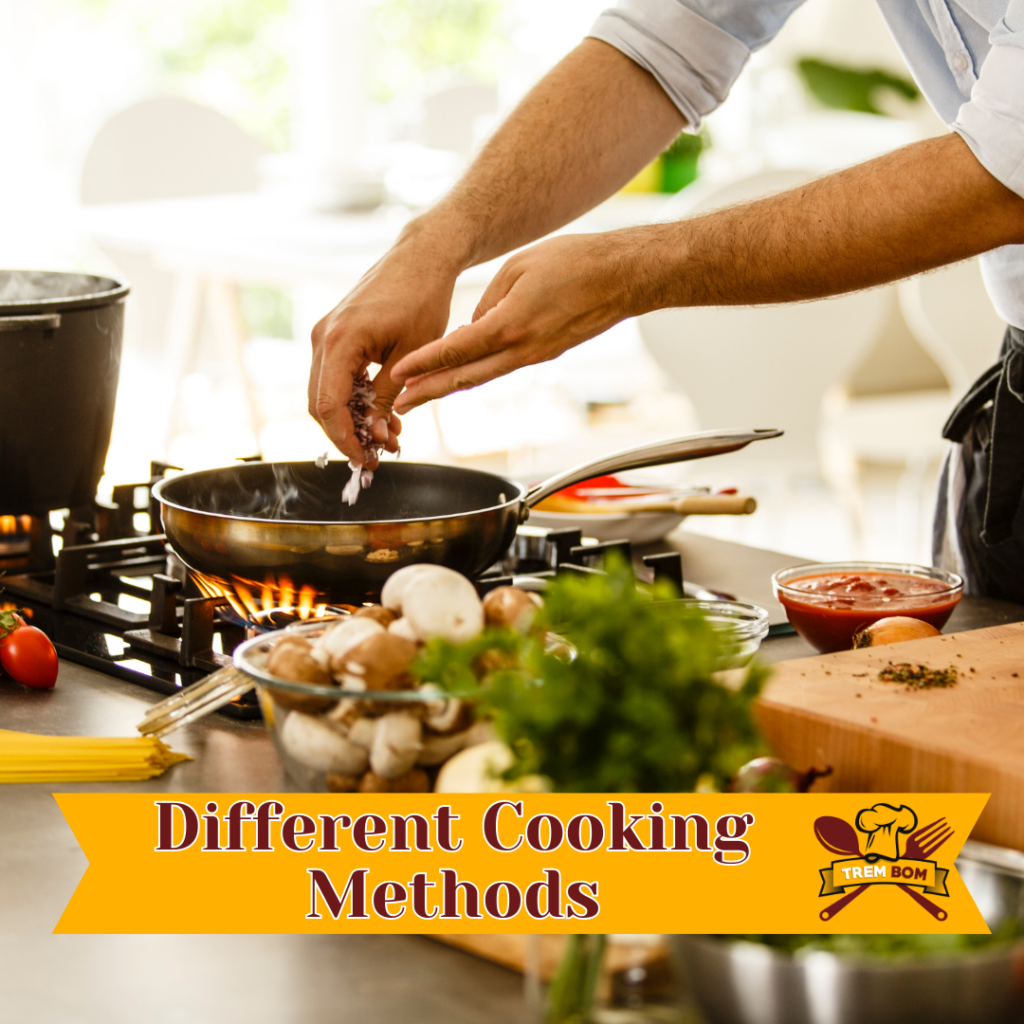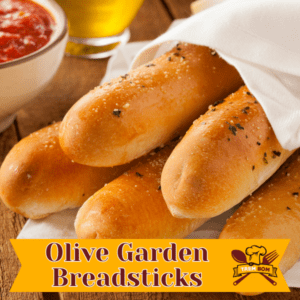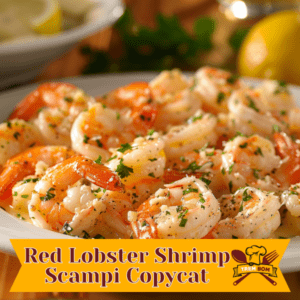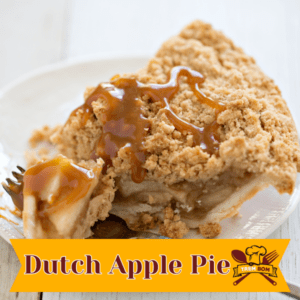
Welcome to our comprehensive guide on different cooking methods! Whether you’re a seasoned chef or just starting in the kitchen, understanding cooking methods is crucial for creating delicious dishes. From the precision of sous-vide to the smoky flavors of grilling, we’ll explore various cooking techniques and the processes behind them.
Key Takeaways
- Different cooking methods affect the taste, texture, and nutritional values of the food you cook.
- Cooking methods can be divided into dry heat, moist heat, combination, and microwave cooking techniques.
- Each cooking method requires specific temperatures, times, and tools to achieve the desired results.
- Knowing the principles behind each cooking method helps you elevate your culinary skills and create delicious dishes.
- Experimenting with different cooking methods can unlock a world of flavors and textures in your cooking.
Exploring Dry Heat Cooking Methods
Dry heat cooking methods are a popular way of cooking food, especially cuts of meat. These methods involve the use of direct heat without the presence of moisture and are called dry-heat cooking methods. The result of this cooking process is a brown and delectable crust on the outside while ensuring that the inside remains moist and tender. Below are some of the most common dry heat cooking methods:
Roasting
Roasting is a method of cooking food in an oven, typically meat, vegetables, and fruits. In this cooking process, the food is placed on a roasting rack and exposed to high heat, roasting the ingredients evenly. Roasting is a fantastic technique that can be used to achieve tender cuts of meat with a crispy brown outside.
Grilling
Grilling is a popular dry heat cooking method that involves cooking food on an open flame. It’s an excellent option for cooking steak, pork chops, chicken breasts, and vegetables. This cooking process makes the food crispy on the outside and tender on the inside, due to the high heat involved.
Frying
Frying is a heat cooking method that uses oil or fat to cook food. This technique is used to cook food such as chicken, potatoes, and other foods. The food is submerged in hot oil, which makes it crispy and brown on the outside, ensuring the inside is cooked correctly.
Broiling
Broiling is a type of dry heat cooking method that uses high heat to cook food from above. It’s an excellent technique for cooking foods such as salmon, steak, and chicken breasts, giving them a crispy crust and a delicious flavor.
Searing
Searing is a technique that involves cooking food over high heat for a short period to create a crispy brown layer on the outside. This method is commonly used for cooking steak, pork chops, chicken breasts, and fish.
Overall, dry heat cooking methods are a fantastic way to cook food, especially cuts of meat. By mastering these techniques, you can create tender, flavorful dishes with a crispy brown exterior that will be sure to impress family and friends.
Mastering Moist Heat Cooking Methods
Moist heat cooking methods involve the use of liquid or steam to cook food. This method is ideal for tougher cuts of meat, poultry, and fibrous vegetables like carrots or turnips.
One of the most common moist heat cooking methods is stewing. Stewing involves cooking small pieces of meat or poultry in a flavorful liquid, such as broth. The dish is slowly simmered over low heat, resulting in tender meat that falls off the bone. This is because the cooking liquid helps to break down the connective tissue and collagen in the meat, resulting in a tender and juicy dish.
Another moist heat cooking method is braising. This method is similar to stewing, but the meat or poultry is first seared at a high temperature to create a crispy crust. It is then cooked in a small amount of liquid over low heat, which helps to create a tender and flavorful dish.
Simmering is another moist heat cooking method that involves cooking food in liquid at a low temperature. This method is commonly used for cooking vegetables, rice, and pasta. Simmering ensures that the food is cooked evenly and prevents it from becoming dry or overcooked.
To create a successful moist heat dish, it is important to use low heat and to only simmer or boil the liquid. This helps to prevent the food from becoming tough or dry. Additionally, it is important to choose the right cooking liquid. Broths, wine, and stocks are commonly used liquids for moist heat methods, as they provide a depth of flavor to the dish.
In summary, mastering moist heat cooking methods is key to creating tender and flavorful dishes. Whether it’s braising, stewing, or simmering, understanding the cooking process and use of cooking liquid is essential. By mastering these techniques, you can create delicious meals that are sure to impress.
Understanding Combination Cooking Techniques
Combination cooking techniques involve using both dry and moist heat methods to achieve desired results. The cooking time, temperature, and method are all crucial factors that require careful consideration to create succulent dishes.
Heat Method
The heat method used in combination cooking depends on the ingredients and the desired outcome. For instance, combination cooking a tough cut of meat involves searing the meat over high heat and then cooking it slowly in a moist-heat environment. The high heat quickly browns the meat’s exterior, creating a caramelized crust, while the moist-heat cooking method cooks the meat through, resulting in a tender and juicy dish.
Cooking Time
The cooking time for combination cooking methods is crucial to create the best results. Cooking times vary depending on the ingredients used and the cooking method employed. Some dishes, such as stews, require long cooking times at low temperatures to allow the flavors to meld together and produce a hearty and delicious dish.
Cooking Process
The combination cooking process requires a lot of patience and attention to detail. It involves using both dry and moist heat methods to create delicious dishes with unique textures and flavors. Whether you’re cooking beef bourguignon, roasted chicken, or pot roast, the combination cooking process can elevate your dishes to new heights.
Combination cooking techniques are versatile and can be used to cook a wide variety of ingredients. Understanding how to use different cooking methods, cooking times and heat methods can help you create sumptuous dishes that are sure to impress your guests.
Exploring the Basics: Boiling and Steaming
Boiling and steaming are two fundamental methods of cooking that use water as a primary cooking medium. Both techniques are easy to perform and require no special equipment. Here we will explain the basic differences between the two methods and how they can be used to cook a variety of ingredients.
Boiling Water: A Different Method to Cook the Food
Boiling water is the most common method of cooking food. This technique involves heating water to its boiling point, then adding the food to cook it. Boiling is a simple and quick method that ensures that food is fully cooked. It is perfect for cooking pasta, potatoes, and eggs quickly.
However, boiling is not always the best method for cooking vegetables since they can easily become mushy and lose their nutrients in the water. To minimize the nutrient loss, try steaming instead.
Steaming: A Simple Method of Cooking Food with Steam
Steaming is a method of cooking food using steam produced by boiling water. Steaming is a gentle cooking process that preserves the natural flavor, texture, and nutrients of food. It’s a great way to cook fibrous vegetables like broccoli, cauliflower, and carrots, as well as delicate fish.
Steaming can be done in various ways, including using a steamer basket, a bamboo steamer, or by wrapping food in foil and steaming it in the oven. The method of cooking depends on the food being cooked and the desired flavor and texture.
Conclusion
Boiling and steaming are basic cooking techniques that use different methods to cook food. Boiling uses a direct approach to cook food, while steaming uses indirect heat through steam. By mastering these cooking techniques, you can elevate your culinary skills and create delicious dishes with ease.
Uncovering the Secrets of Radiant Heat Cooking
Radiant heat cooking is a type of dry-heat cooking method that uses direct heat from a heat source, such as an oven or grill, to cook the food. This method is typically used for cooking meat, as it allows for the outside to become crispy and caramelized while the inside remains tender and juicy.
There are several types of cooking methods that use radiant heat, including baking, roasting, broiling, and grilling. Baking and roasting involve using radiant heat to cook food evenly, while broiling and grilling utilize high heat to cook the food quickly.
Dry-heat cooking methods, such as radiant heat cooking, are ideal for cooking meat. This is because the high temperatures create a beautiful crust on the outside of the meat, which locks in the juices and flavor. When cooking meat using radiant heat, it is important to select the right cut and cook it for the appropriate amount of time. Tender cuts of meat, such as filet mignon, can be cooked quickly using high heat, while tougher cuts, such as brisket, are best cooked slowly using low heat.
Overall, radiant heat cooking is a basic cooking technique that involves using dry heat to cook the food. Whether you’re baking a loaf of bread or grilling a steak, understanding the principles of radiant heat cooking is essential for achieving the desired result.
Exploring Moist-Heat Cooking Techniques
Moist-heat cooking techniques are a staple in basic cooking methods. They involve cooking food in a liquid or steam environment, which helps keep it moist and tender. A few different types of moist heat cooking methods include:
- Simmering: This method of cooking involves immersing food in liquid and heating it to a temperature just below boiling. This is a great way to cook foods such as vegetables, fruits, and poultry.
- Poaching: In this method, food is cooked in a liquid that is heated just below boiling point. Poaching is a gentle cooking technique that’s perfect for cooking fish and delicate proteins.
- Braising: Braising is a cooking technique that involves searing food in a pan and then cooking it slowly in a small amount of liquid over low heat. This method is perfect for cooking tough cuts of meat, such as beef brisket.
Moist-heat cooking techniques can often lead to overcooking, making it necessary to know how to stop the cooking process. This can be achieved by either removing the food from the heat source or by shocking it in ice water to stop the cooking process.
Moist-heat cooking methods are a fantastic way to cook meat and vegetables to perfection. Understanding these basic cooking methods is essential for any aspiring chef or home cook.
Discovering the Versatility of Microwave Cooking
Microwave cooking is a quick and convenient way to cook a variety of dishes, from reheating leftovers to cooking a full meal. With the right techniques and equipment, you can enjoy delicious meals in a fraction of the time it would take with traditional cooking methods.
One of the benefits of microwave cooking is that it requires little to no oil, making it a healthier option compared to other cooking methods. The heat from the microwave also helps to retain the nutrients in the food, ensuring that you get the most out of your ingredients.
When cooking in the microwave, it’s important to use microwave-safe dishes and cover the food to prevent splatters. You can also use microwave-safe plastic wrap to create a seal around the food, which helps to lock in moisture and flavors.
To get the best results with microwave cooking, it’s essential to follow recipe instructions carefully and stir the food at regular intervals to ensure it cooks evenly. You can also experiment with microwave-safe accessories like steamer baskets and grill plates to achieve different textures and flavors.
Whether you’re a busy professional or a student cooking in a dorm room, microwave cooking is a versatile and convenient way to prepare meals. With some creativity and patience, you can create delicious and healthy dishes right from the comfort of your own home.
Exploring Other Cooking Methods
In addition to the traditional cooking methods mentioned above, there are various other ways of cooking food that you may want to try. These methods involve cooking without the use of direct heat or moisture, and may require longer cooking times to complete the cooking process.
If you want to experiment with cooking due to its unique flavor and texture, consider using a slow cooker. This cooking technique involves using low, moist heat over an extended period to create tender and flavorful dishes. Another alternative method to try is sous-vide cooking, which involves cooking food in a vacuum-sealed bag in a temperature-controlled water bath. This method ensures even cooking and allows for precise control over the final dish.
Whether you’re looking to expand your culinary skills or simply want to try something new, these alternative cooking methods are sure to provide delicious and unique results.
Cooking Tips and Techniques for Specific Ingredients
When it comes to cooking, different ingredients require specific techniques to bring out their best flavors and textures. Whether you’re dealing with fibrous vegetables, delicate fish, or tough cuts of meat like flank steak or brisket, understanding the right way to cook them can make a world of difference.
Cooking Fibrous Vegetables
Fibrous vegetables such as broccoli, cauliflower, and asparagus can be delicious when cooked properly. However, they require a cooking method that softens their tough exteriors while still maintaining their crispy texture. One of the best ways to cook these vegetables is by blanching them in boiling water for a few minutes and then immediately plunging them into ice water to stop the cooking process.
Cooking Delicate Fish
Fish is a delicate ingredient that requires a gentle touch. To avoid overcooking and drying out your fish, try poaching it in a flavorful broth or steaming it with herbs and spices. These cooking methods require minimal oil and help to lock in moisture, resulting in tender and flavorful fish dishes.
Cuts of Meat Like Flank Steak or Brisket
Cuts of meat like flank steak or brisket can be tough and chewy if not cooked properly. To tenderize these cuts, consider using a cooking method that requires low heat and a long cooking time. For example, braising involves cooking the meat in a liquid over low heat for several hours until it becomes tender and flavorful. Another option is to slow cook the meat in a crockpot or Dutch oven, which allows the meat to cook slowly and evenly.
By understanding the cooking methods required for specific ingredients, you can elevate your culinary skills and create delicious dishes that showcase the natural flavors of your ingredients.
The Art of Even Cooking: Baking and Roasting
Baking and roasting are two cooking methods that utilize dry heat to cook food evenly. Radiant heat is used to cook the food from the outside in, making it an excellent means of cooking tender cuts of meat such as beef and pork.
The cooking technique used in baking and roasting involves placing the food in a preheated oven to cook. The oven’s temperature usually ranges from 250°F-450°F, depending on what you are cooking. The heat is then distributed evenly inside the oven, cooking the food from all sides.
One essential tip to keep in mind when baking or roasting is to ensure that your oven is preheated to the correct temperature before placing the food in it. Doing so ensures that the food is cooked evenly and eliminates the risk of undercooking or overcooking.
Another critical aspect of baking and roasting is the use of a meat thermometer. The temperature of the meat is a crucial factor in determining whether it is succulent and juicy or tough and dry. Use a thermometer to check the internal temperature of the meat, ensuring it is cooked appropriately.
Baking and roasting are versatile cooking methods that can be used to cook a variety of dishes, from roasted vegetables to whole chickens. It’s all about understanding the principles behind each technique and experimenting with different recipes.
Conclusion
Mastering different cooking methods is essential for any aspiring chef or home cook. By understanding the principles behind each technique, you can unlock a world of flavors and create culinary masterpieces. Whether you prefer dry heat cooking methods such as roasting, grilling, and broiling, or moist heat cooking methods like stewing and braising, each method has its unique benefits and applications.
Combination cooking techniques allow you to combine the advantages of both dry and moist heat methods to create delicious dishes. Boiling and steaming are fundamental cooking techniques that use the power of hot water and steam to cook food. Radiant heat cooking, on the other hand, involves the use of direct heat from a heat source such as an oven or a grill.
Microwave cooking has revolutionized the way we cook food, allowing for quick and efficient cooking of various dishes. In addition, there are alternative methods worth exploring, such as sous-vide and cooking with a slow cooker.
When it comes to specific ingredients, knowing the right cooking technique is crucial to bringing out their best flavors and textures. Whether you’re cooking fibrous vegetables, delicate fish, or tough cuts of meat, this guide provides tips and techniques to help you achieve delicious results.
So go ahead, experiment with different cooking methods, and enjoy the delicious results they bring to your table. Happy cooking!
FAQ
What are cooking methods?
Cooking methods refer to the various techniques and processes used to cook food. They can involve different heat sources, temperatures, and cooking times, resulting in distinct flavors, textures, and appearances of dishes.
Why is it important to understand different cooking methods?
Understanding different cooking methods allows you to have more control over your culinary creations. It helps you achieve desired results, enhance flavors, and ensure that the food is cooked evenly and safely.
How do dry heat cooking methods differ from moist heat cooking methods?
Dry heat cooking methods involve cooking food directly using high temperatures and without the presence of moisture. On the other hand, moist heat cooking methods utilize liquid or steam to cook food at lower temperatures. The choice of method depends on the desired outcome and the type of food being cooked.
What are some examples of dry heat cooking methods?
Some examples of dry heat cooking methods include roasting, grilling, frying, broiling, and searing. These methods are often used to create a browning effect, impart smoky flavors, and result in tender cuts of meat with a delectable crust.
What are some examples of moist heat cooking methods?
Examples of moist heat cooking methods include stewing, simmering, braising, poaching, and steaming. These methods rely on the addition of liquid or steam to cook food slowly and evenly, resulting in tender and flavorful dishes.
What are combination cooking techniques?
Combination cooking techniques involve combining both dry and moist heat cooking methods to achieve desired results. By using a combination of heat methods and cooking times, you can enhance flavors and create unique textures in your dishes.
What are some basic cooking methods for boiling and steaming?
Boiling involves cooking food in a liquid, usually water, at or near its boiling point. Steaming, on the other hand, involves cooking food by using steam generated from boiling water. Both methods are versatile and can be used to cook a variety of ingredients.
How does radiant heat cooking work?
Radiant heat cooking involves using direct heat from a heat source such as an oven or a grill. This type of cooking can be used in various dry-heat cooking methods, and it helps cook meat to perfection by evenly distributing heat.
What makes microwave cooking versatile?
Microwave cooking is versatile because it allows you to cook a variety of dishes quickly and efficiently. It can be used to reheat leftovers, steam vegetables, cook pasta, and even bake small cakes. However, it may not be suitable for all types of cooking.
What are some other cooking methods worth exploring?
In addition to the traditional cooking methods mentioned, there are alternative techniques worth exploring, such as sous-vide cooking, slow cooking with a slow cooker, and smoking. These methods offer unique flavors and textures.
Are there specific cooking techniques for different ingredients?
Yes, different ingredients require specific cooking techniques to bring out their best flavors and textures. For example, fibrous vegetables may benefit from blanching or sautéing, while delicate fish may be best cooked through methods like steaming or poaching.
What are some tips for baking and roasting?
Baking and roasting are cooking techniques that utilize dry heat to cook food evenly. For baking, it usually involves using radiant heat in an oven, ideal for bread, pastries, and cakes. Roasting, on the other hand, is often used for tender cuts of meat and involves higher temperatures to achieve a delicious crust.






